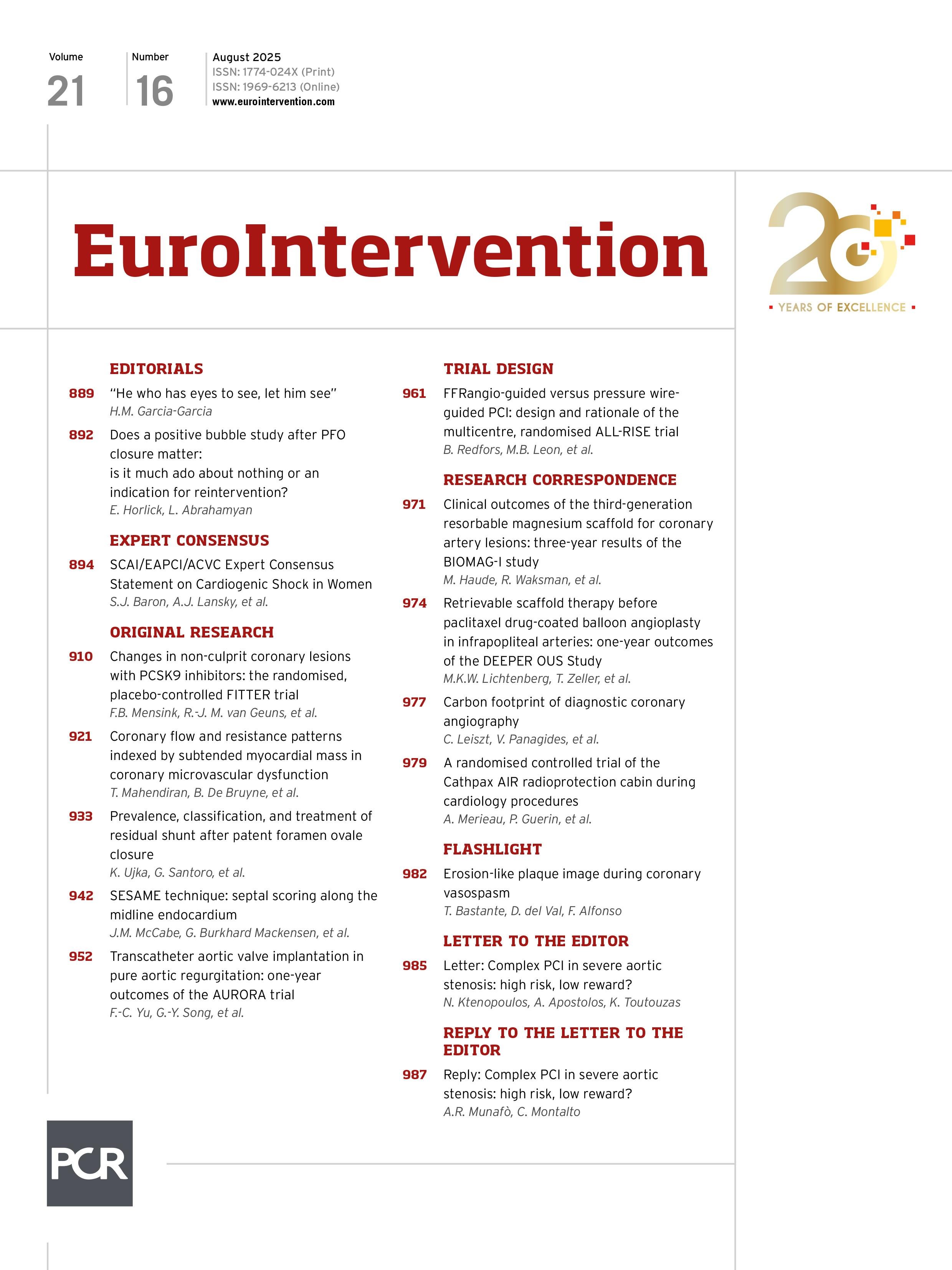Cory:
Unlock Your AI Assistant Now!
We sincerely appreciate the interest in our article “Outcomes of complex, high-risk percutaneous coronary intervention in patients with severe aortic stenosis: the ASCoP registry”1 shown in the Letter to the Editor by Ktenopoulos et al2. We agree with the authors about the need to balance the procedural risk of these patients against the anticipated clinical benefit that could be achieved after percutaneous coronary intervention (PCI). Patients who have severe aortic stenosis and concomitant coronary artery disease often present more comorbidities and challenging vascular access that translate into a higher risk of complications during transcatheter aortic valve implantation (TAVI) and/or PCI. Data from randomised trials and real-world registries considering this high-risk population reported a high rate of events (particularly bleeding, vascular complications, and acute kidney injury), with a significant increase in their incidence if TAVI and PCI were both performed345. The results of our registry, considering an even higher-risk population, confirmed previous evidence.
As is correctly pointed out by Ktenopoulos et al, one of the reasons that might justify the high rate of adverse events (vascular complications and major bleeding) observed in the ASCoP registry is the low use of radial artery access for PCI (56.6% overall). PCI from the radial artery was more commonly performed in patients undergoing staged than concomitant procedures (69.4% vs 25.7%). Moreover, while the use of radial access increased over time in the staged-strategy group (44.5% in 2013-2014 to 84% in 2022-2023), its use in the concomitant-strategy group remained unchanged over the years (18.5% in 2013-2014 to 27.5% in 2022-2023). The rate and the trend over time of the use of radial artery access observed in patients undergoing PCI before or after TAVI are in line with real-world experiences on complex/high-risk PCI6. On the other hand, the high usage of the femoral artery access in the concomitant-strategy group might be explained by the possibility to perform complex/high-risk PCI and TAVI from the same large-bore arterial access. As a result, periprocedural complications occurred more frequently in the concomitant than in the staged group (vascular complications: concomitant 16.7% vs staged 9.4%; major bleeding: concomitant 10.9% vs staged 3.9%).
In conclusion, clinical presentation (acute or chronic coronary syndrome), coronary anatomy and subtended global myocardial ischaemia, angiographic and/or functional severity of coronary lesions and patients’ frailty and comorbidities should guide selection of candidates who will benefit the most from revascularisation, independently of TAVI, while timing (concomitant vs staged) should be tailored individually to minimise the overall procedural risk. This is especially true in cases of complex/high-risk PCI, when higher rates of adverse events are expected, but should not hamper clinical decision-making per se.
Conflict of interest statement
The authors have no conflicts of interest related to this reply to declare.

